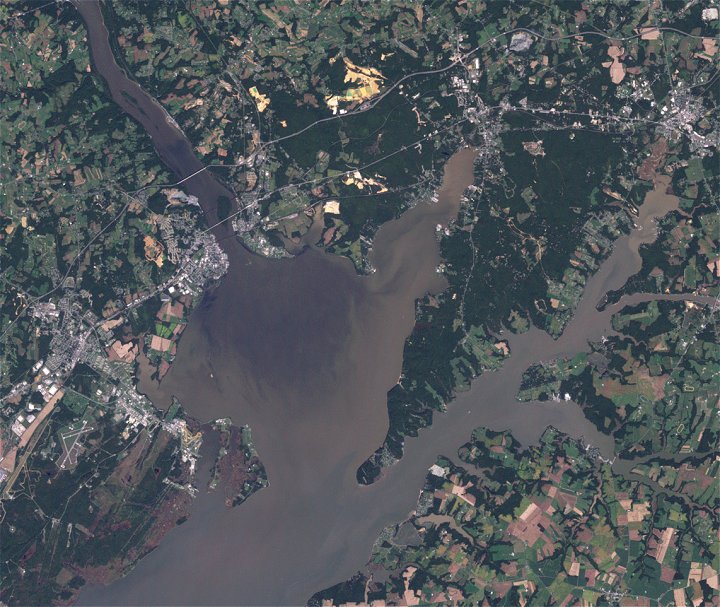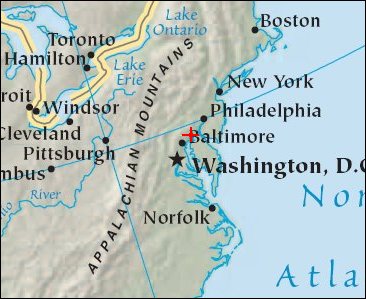| Earth from Space is a free eBook describing our planet from a satellite's perspective. Fore more information, please read the About pages. |

|

Home  North America North America  USA USA  Maryland Maryland  Susquehanna River Susquehanna River |
|






|
|
Susquehanna RiverPosition of center of photo (Lat/Long): [39.49906/-76.01371] |
|
  After carving its way through the Appalachian Mountains of New York and Pennsylvania, the Susquehanna River passes by the towns of Havre de Grace (southwest bank) and Perryville (northeast bank) and empties into the Chesapeake Bay in the very northeastern corner of Maryland (United States). Pockets of deep green forest contrast sharply with light green and tan clearings in this agriculture-dominated landscape. Two major roadways cross the Susquehanna in the image: Interstate 95, which connects Baltimore to Philadelphia, is the northern roadway; Highway 40 is the smaller roadway to the south. After carving its way through the Appalachian Mountains of New York and Pennsylvania, the Susquehanna River passes by the towns of Havre de Grace (southwest bank) and Perryville (northeast bank) and empties into the Chesapeake Bay in the very northeastern corner of Maryland (United States). Pockets of deep green forest contrast sharply with light green and tan clearings in this agriculture-dominated landscape. Two major roadways cross the Susquehanna in the image: Interstate 95, which connects Baltimore to Philadelphia, is the northern roadway; Highway 40 is the smaller roadway to the south.
The water flowing into the Bay from the Susquehanna River (and other rivers in the Chesapeake watershed) carries sediment and nutrients such as nitrogen and phosphorus. While some transport of soil and nutrients is normal and healthy, large-scale changes of the watershed - for example, widespread forest and wetland conversion to cities and agricultural land - has created water quality problems in the Chesapeake Bay. Excess sediment can smother underwater grasses and oyster beds. Excess amounts of nutrients from residential and agricultural fertilizer and wastewater degrade the Chesapeake Bay ecosystem through over-fertilization of aquatic plants like algae. When the plants die, bacteria in the water decompose them, using up oxygen in the water column in the process. The oxygen depletion creates dead zones in the deep waters of the Bay where marine life cannot survive. |
| Source of material: NASA |
Further information: WikiPedia article on Susquehanna River
Last Update: 2011-03-30

